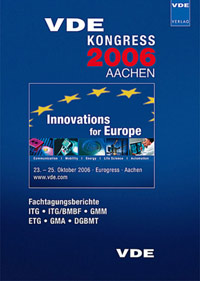Design Strategies for Low-Power Wireless Sensors and Actuators
Konferenz: VDE-Kongress 2006 - Innovations for Europe - Fachtagungsberichte der ITG/BMBF - GMM - ETG - GMA - DGBMT
23.10.2006 - 25.10.2006 in Aachen, Germany
Tagungsband: VDE-Kongress 2006
Seiten: 5Sprache: EnglischTyp: PDF
Persönliche VDE-Mitglieder erhalten auf diesen Artikel 10% Rabatt
Autoren:
Sikora, Axel (Berufsakademie Lörrach, Germany)
Inhalt:
Reduction of power consumption is a major stepping stone towards truly wireless and mobile devices. Especially in the field of machine-to-machine-(M2M)-communication, many applications call for several months or years without battery changes. However, batteries must be kept as small as possible due to cost, weight, and form factor. Whereas it is quite easy to optimize the energy consumption of the periodical operation of a sensor’s communication path by applying extensive power-down periods, this is much more difficult for the actuator side. There, latency may become a major hurdle, if the communication circuit is put into a sleep mode. This contribution describes strategies for wireless communication of actuators and activated sensors. The strategies include wake-up (activation) circuits, regular power-down phases, sniffing for energy detection and address matching, and mixed strategies. In addition, architectural issues are discussed. Finally, example solutions and calculations give an insight into the feasibility of products.


